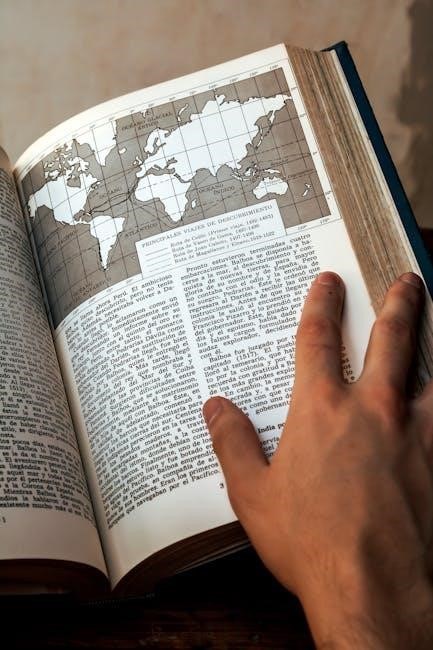This comprehensive study guide is designed to help you successfully
navigate the CDL doubles and triples endorsement exam. It covers essential
topics, safe handling practices, air brake systems, and load positioning.
Mastering this guide will equip you with the knowledge needed for safe
operation.
The doubles and triples endorsement on a Commercial Driver’s License (CDL)
permits holders to operate commercial vehicles that pull more than one
trailer simultaneously. This endorsement is essential for drivers involved
in specific transport roles requiring the hauling of multiple trailers,
enhancing efficiency and logistical capabilities. Obtaining this endorsement
necessitates passing a specialized knowledge test that evaluates
understanding of safe handling, air brake systems, and load distribution
peculiar to double and triple trailer configurations.
This endorsement goes beyond the standard CDL requirements, demanding a higher
level of expertise due to the increased complexity and potential hazards
associated with maneuvering longer and heavier vehicle combinations. Drivers
must demonstrate proficiency in managing the unique challenges posed by
multiple articulation points and the dynamic behavior of these vehicles on
the road. Successful completion of the endorsement process signifies a
driver’s competence in operating these specialized vehicles safely and
efficiently, contributing to overall road safety and regulatory compliance.
The endorsement also often requires Entry-Level Driver Training (ELDT).
This guide serves as your roadmap to understanding the intricacies of the
doubles and triples endorsement, providing the necessary knowledge and
resources to excel in the required knowledge test and operate these vehicles
with confidence. Remember that a valid CDL is a prerequisite.
CDL Requirements for Doubles and Triples
To legally operate vehicles pulling double or triple trailers, a Commercial
Driver’s License (CDL) with a doubles/triples (T) endorsement is mandatory.
This endorsement signifies that the driver has met specific knowledge
requirements and is qualified to handle the complexities of operating such
combinations. Before pursuing the T endorsement, candidates must already
possess a valid CDL. The fundamental CDL requirements, including age,
medical fitness, and driving record, must be met before adding any
endorsements.
The doubles/triples endorsement necessitates passing a written knowledge
test covering topics such as safe handling practices, air brake systems
specific to combination vehicles, and load distribution techniques for
multiple trailers. This test ensures drivers understand the unique challenges
associated with operating these longer and heavier vehicles. Furthermore,
Entry-Level Driver Training (ELDT) standards may apply, requiring completion
of a training program from an FMCSA-approved provider.
It’s crucial to consult your state’s specific CDL requirements, as regulations
can vary. Some states may have additional requirements beyond the federal
minimums. Drivers operating double or triple saddle mount combinations are
also required to hold the doubles/triples endorsement. Maintaining a clean
driving record and adhering to all traffic laws are essential for retaining
both the CDL and the doubles/triples endorsement.

Who Needs a Doubles/Triples Endorsement?
Any commercial driver who operates a vehicle pulling two or three trailers
simultaneously is required to possess a doubles/triples endorsement on their
Commercial Driver’s License (CDL). This endorsement is not merely a
suggestion; it’s a legal necessity mandated by federal and state
regulations. Drivers operating various types of commercial vehicles, such as
truck tractors hauling multiple trailers for freight transport, fall under
this requirement.
Specifically, drivers involved in configurations like “Rocky Mountain
Doubles” or “Turnpike Doubles,” which are common in certain regions for
long-haul transportation, must have this endorsement. Furthermore, drivers
operating double or triple saddle mount combinations also need the
doubles/triples endorsement, as these configurations present unique handling
challenges. It’s important to note that the gross vehicle weight rating
(GVWR) and the intended use of the vehicle combination determine whether the
CDL and the doubles/triples endorsement are necessary.

If the combined weight exceeds specified limits or the vehicle is used for
interstate commerce, the CDL and endorsement become mandatory. Therefore,
anyone considering a career involving the operation of double or triple
trailer combinations should prioritize obtaining the necessary training and
passing the required knowledge test to secure their doubles/triples
endorsement. Failure to do so can result in significant penalties, including
fines, disqualification, and potential legal repercussions.

Doubles/Triples Endorsement Exam
The Doubles/Triples endorsement exam is a crucial step in obtaining the
legal authorization to operate commercial vehicles pulling multiple trailers.
This exam is designed to assess a driver’s knowledge and understanding of
the specific safety requirements, handling characteristics, and operational
considerations associated with double and triple trailer combinations.
The exam typically consists of multiple-choice questions covering a range of
topics, including safe handling practices, air brake systems specific to
these configurations, load positioning for optimal stability, and relevant
regulations. Candidates must demonstrate a comprehensive understanding of
these areas to pass the exam and earn their endorsement. A passing score,
often around 80%, is required to proceed.

Preparation for the exam is essential, and various resources are available
to aid in studying. These resources include official state CDL manuals,
practice tests, and online study guides. It’s highly recommended that
candidates thoroughly review these materials and familiarize themselves with
the key concepts and regulations. Furthermore, practical experience and
hands-on training can significantly enhance a driver’s understanding and
preparedness for the exam. By dedicating sufficient time and effort to
studying and practicing, aspiring drivers can increase their chances of
success on the Doubles/Triples endorsement exam and embark on a safe and
successful career in the transportation industry.
Knowledge Test Overview
The Doubles and Triples endorsement knowledge test is a critical component
of obtaining the necessary credentials to operate vehicles with multiple
trailers. This test assesses your understanding of the specific regulations,
safety procedures, and operational considerations unique to these types of
combinations; Success on this test demonstrates your preparedness to handle
the increased complexity and potential hazards associated with pulling
doubles and triples.
The test generally covers topics such as coupling and uncoupling procedures,
inspecting multiple trailers, managing air brake systems in longer
combinations, understanding the increased stopping distances, and the
importance of proper weight distribution. You’ll also be tested on your
knowledge of how different road conditions and weather can affect the
handling of these vehicles. Expect questions related to safe driving
techniques, including managing speed, maneuvering in tight spaces, and
handling emergency situations.
To prepare effectively, consult your state’s CDL manual, which provides
detailed information on all relevant topics. Practice tests are invaluable
for familiarizing yourself with the question format and identifying areas
where you need further study. Remember, a thorough understanding of the
material is essential for both passing the test and ensuring safe operation
of doubles and triples on the road.
Safe Handling Practices
Operating doubles and triples requires a heightened awareness and adherence
to safe handling practices. These combinations present unique challenges due
to their increased length, weight, and complexity. One of the most
critical aspects is maintaining a safe following distance, which should be
significantly greater than when operating a single trailer. This allows for
increased stopping distances, especially in adverse weather conditions.
When maneuvering, anticipate wider turns and be mindful of the “off-tracking”
phenomenon, where the rear trailers follow a different path than the
tractor. This is especially important in urban areas and tight spaces.
Regularly inspect all connections between trailers, ensuring they are secure
and properly functioning. Pay close attention to the air lines and
electrical connections.
Speed management is also crucial. Reduce speed in windy conditions and on
curves to prevent swaying or rollovers. Be proactive in scanning the road
ahead for potential hazards and anticipate the actions of other drivers.
Remember, defensive driving is paramount when operating these longer
combinations. Finally, always adhere to weight restrictions and proper load
distribution to maintain stability and control. These practices are not
only essential for safety but also for preventing damage to equipment and
cargo.
Air Brake Systems in Doubles and Triples
Understanding air brake systems is paramount when operating doubles and
triples, as these vehicles rely heavily on them for safe stopping. The
complexity of these systems increases with the number of trailers, demanding
a thorough knowledge of their operation and maintenance. A critical
component is the service brake system, which applies brakes to all wheels
simultaneously. It’s essential to ensure that each trailer’s brakes are
properly connected and functioning correctly.
The emergency brake system is equally important, providing a backup in case
of air loss. This system automatically applies the trailer brakes if the air
pressure drops below a certain level. Regular inspection of the emergency
brake system is crucial to ensure its reliability. Furthermore, understanding
the function of the tractor protection valve is vital. This valve prevents
air loss from the tractor if a trailer breaks away or experiences a major
air leak.
Conducting thorough pre-trip inspections, including brake tests, is
mandatory. Check for proper air pressure build-up, leaks, and ensure that
the brakes apply and release correctly on all trailers. Pay close attention
to the slack adjusters, ensuring they are within acceptable limits.
Failing to properly maintain and inspect the air brake system can lead to
brake failure, resulting in serious accidents.
Load Positioning for Safe Handling
Proper load positioning is crucial for the safe handling of doubles and
triples. Uneven weight distribution can lead to instability, making the
vehicle difficult to control, especially during turns or sudden maneuvers.
The heaviest part of the load should always be positioned as low as possible
and centered over the axles to maintain a low center of gravity. Distributing
weight evenly minimizes the risk of swaying or tipping.
When loading multiple trailers, ensure that the weight is progressively
lighter towards the rear. The front trailer should bear the heaviest load,
followed by the middle and rear trailers, respectively. This configuration
enhances stability and reduces the chances of the rear trailers whipping or
swaying excessively. Secure all cargo properly using appropriate tie-downs,
straps, or chains to prevent shifting during transit. Shifting cargo can
drastically alter the vehicle’s center of gravity, leading to hazardous
situations.
Regularly check the load throughout the journey, especially after the initial
few miles, to ensure that nothing has shifted or come loose. Be mindful of
the load’s characteristics, such as its density and potential for movement.
Adjust your driving accordingly, taking corners at reduced speeds and
avoiding sudden braking or acceleration. Adhering to these guidelines will
significantly improve the safety and stability of your doubles and triples
combination.
Study Resources for the Doubles/Triples Test
To adequately prepare for the CDL doubles and triples endorsement test,
utilize a variety of study resources. Start with the official CDL handbook
provided by your state’s Department of Motor Vehicles (DMV) or equivalent
agency; This handbook contains comprehensive information on all relevant
topics, including safe handling, air brake systems, and combination vehicle
knowledge. Supplement the handbook with online practice tests and quizzes
specifically designed for the doubles and triples endorsement.
These practice tests simulate the actual exam format and content, helping you
identify areas where you need further study. Explore reputable websites and
mobile apps that offer CDL test preparation materials, including detailed
explanations of correct answers. Consider enrolling in a CDL training course
or workshop that focuses on doubles and triples operations. These courses
often provide hands-on experience and expert guidance from experienced
instructors.
Additionally, watch instructional videos and documentaries on doubles and
triples driving techniques and safety procedures. Join online forums and
communities where you can connect with other CDL drivers and share study
tips and resources. Review relevant federal regulations and guidelines
pertaining to doubles and triples operations, such as those issued by the
Federal Motor Carrier Safety Administration (FMCSA). By combining these
resources, you can create a well-rounded study plan and increase your
chances of passing the doubles and triples endorsement test.
Practice Tests and Questions

Practice tests and questions are invaluable tools for preparing for the CDL
doubles and triples endorsement exam. These resources allow you to assess
your knowledge, identify areas of weakness, and familiarize yourself with
the exam format. Begin by taking several full-length practice tests that
simulate the actual exam in terms of content, time constraints, and question
types. Analyze your performance on each practice test to pinpoint specific
topics or concepts that require further review.
Focus on understanding the reasoning behind each correct answer, rather than
simply memorizing the answers themselves. Utilize online resources, CDL
training manuals, and study guides to find a wide range of practice
questions covering all relevant topics, including safe handling, air brake
systems, and combination vehicle knowledge. Pay close attention to questions
that involve scenarios or real-world situations, as these often appear on
the actual exam. Consider creating your own practice questions based on the
material you are studying.
Work through these questions regularly to reinforce your understanding and
retention. Participate in group study sessions or online forums where you
can discuss practice questions with other CDL candidates. Explain your
reasoning for choosing a particular answer and listen to the explanations of
others. By consistently engaging with practice tests and questions, you can
build your confidence, improve your test-taking skills, and increase your
chances of success on the CDL doubles and triples endorsement exam.

General Knowledge Topics

The CDL general knowledge section lays the foundation for understanding
safe commercial vehicle operation, extending to specific endorsements like
doubles and triples. Expect questions on basic vehicle systems, including
engine components, electrical systems, and vehicle inspection procedures. A
thorough grasp of traffic laws and regulations is essential, covering speed
limits, right-of-way rules, and safe driving practices in various
conditions. Understanding hazardous materials regulations, even if you don’t
plan to haul them, is part of the baseline knowledge.
Safe driving techniques are heavily emphasized, encompassing space
management, hazard perception, and defensive driving strategies. Fatigue
management is crucial, covering hours-of-service regulations and the
impacts of drowsiness on driving performance. Effective communication with
other drivers, including proper use of signals and understanding blind
spots, is vital. Understanding how weather conditions affect vehicle
handling and braking distances is also necessary.
Vehicle weights and load distribution are important, focusing on preventing
overloads and ensuring proper cargo securement. Emergency procedures,
including accident reporting and handling vehicle breakdowns, must be
understood. Review these general knowledge areas thoroughly, using official
CDL manuals and practice tests. This foundation will make the specific
knowledge required for doubles and triples easier to grasp, contributing to
safer operation and better exam performance.
Air Brakes Specifics
For CDL drivers seeking a doubles/triples endorsement, a strong grasp of air
brake systems is crucial. Air brakes are the standard braking system on
these heavy vehicles, and understanding their operation is vital for safe
driving. The air brake section of the CDL exam covers various components,
including the air compressor, storage tanks, brake chambers, and control
valves. You must know how these components work together to slow and stop
the vehicle.
Pre-trip inspection of the air brake system is heavily emphasized. This
includes checking air pressure buildup, testing the low-pressure warning
devices, and ensuring the spring brakes activate properly. Knowledge of air
loss rates and the ability to identify leaks are essential. Understanding
the function of the antilock braking system (ABS) in air brake systems is
also important. ABS helps prevent wheel lockup during hard braking,
improving vehicle control.
Safe operating practices with air brakes are a key focus. This includes
avoiding excessive brake use, understanding brake fade, and using proper
braking techniques on downgrades. Knowing the stopping distances of vehicles
equipped with air brakes under various conditions is also necessary. A
thorough understanding of air brake systems is not just for the exam; it’s
essential for the safe operation of doubles and triples.
Combination Vehicle Knowledge
Operating doubles and triples requires a comprehensive understanding of
combination vehicle dynamics. This section of the CDL doubles/triples study
guide focuses on the specific knowledge needed to handle these longer and
more complex vehicles safely. Key areas include coupling and uncoupling
procedures, inspecting coupling devices, and understanding the unique
challenges posed by multiple trailers.
Proper coupling is paramount for safety. This involves ensuring the trailers
are securely connected, the air and electrical lines are properly attached,
and the landing gear is raised. Inspecting the fifth wheel, kingpin, and
pintle hook for wear and damage is crucial. Understanding the “crack the
whip” effect, where the rear trailer experiences amplified movement, is
essential for maintaining control, especially during turns.
Weight distribution is another critical aspect. Unevenly loaded trailers can
lead to instability and increase the risk of rollovers. Drivers must
understand how to distribute weight properly to ensure safe handling.
Furthermore, knowledge of state and federal regulations regarding length and
weight restrictions for combination vehicles is mandatory. This section
prepares drivers to manage the unique challenges associated with operating
doubles and triples, ensuring safer roads for everyone.
Steps to Obtain a Doubles/Triples Endorsement
Earning a doubles/triples endorsement on your Commercial Driver’s License
(CDL) involves several key steps. First, you must possess a valid CDL. This
serves as the foundation for adding specialized endorsements. Next, thorough
preparation is crucial. Study the official state CDL manual, focusing on the
doubles and triples section. Consider utilizing practice tests and study
guides to reinforce your understanding of the material.
Once you feel prepared, schedule an appointment to take the doubles/triples
knowledge test at your local Department of Motor Vehicles (DMV) or equivalent
agency. This written exam assesses your understanding of safe operating
procedures, vehicle inspection, and relevant regulations. A passing score is
required to proceed.
Some states may require a practical skills assessment in addition to the
knowledge test. Check with your state’s DMV for specific requirements.
Finally, complete the necessary application forms and pay any associated
fees. Upon successful completion of all requirements, your CDL will be
updated to include the doubles/triples endorsement, authorizing you to
operate vehicles with multiple trailers. Remember to always adhere to safety
regulations and best practices while operating these vehicles.

ELDT and Double/Triple Trailer Training
The Entry-Level Driver Training (ELDT) regulations, which went into effect
February 7, 2022, significantly impact aspiring CDL drivers, including those
seeking a doubles/triples endorsement. ELDT mandates that all new CDL
applicants receive standardized training from a certified provider before
taking their skills test. This training covers essential topics like basic
operation, safe operating procedures, and advanced operating practices.

For individuals pursuing a doubles/triples endorsement, specific training
related to multiple trailer configurations is crucial. This training should
cover topics such as coupling and uncoupling procedures, inspecting multiple
trailers, managing the unique handling characteristics of these vehicles, and
understanding the increased risk of accidents.
While ELDT sets a minimum standard, it’s essential to seek out comprehensive
training that goes beyond the basics. Look for programs that offer hands-on
experience with doubles and triples, allowing you to practice maneuvers in a
safe and controlled environment. This practical experience is invaluable for
developing the skills and confidence needed to operate these vehicles safely
on the road. Ensure the training program is FMCSA-approved to meet ELDT
requirements.
